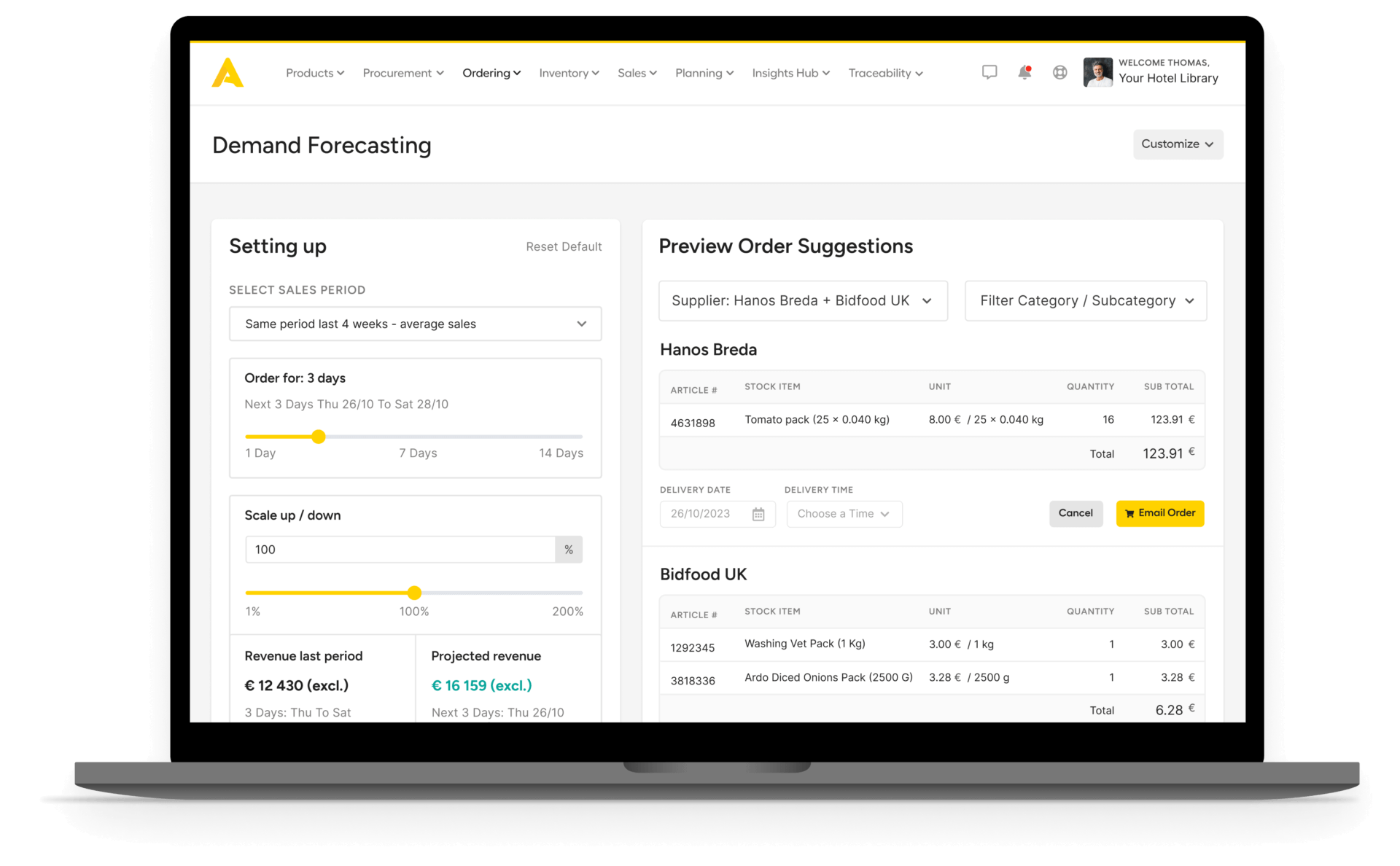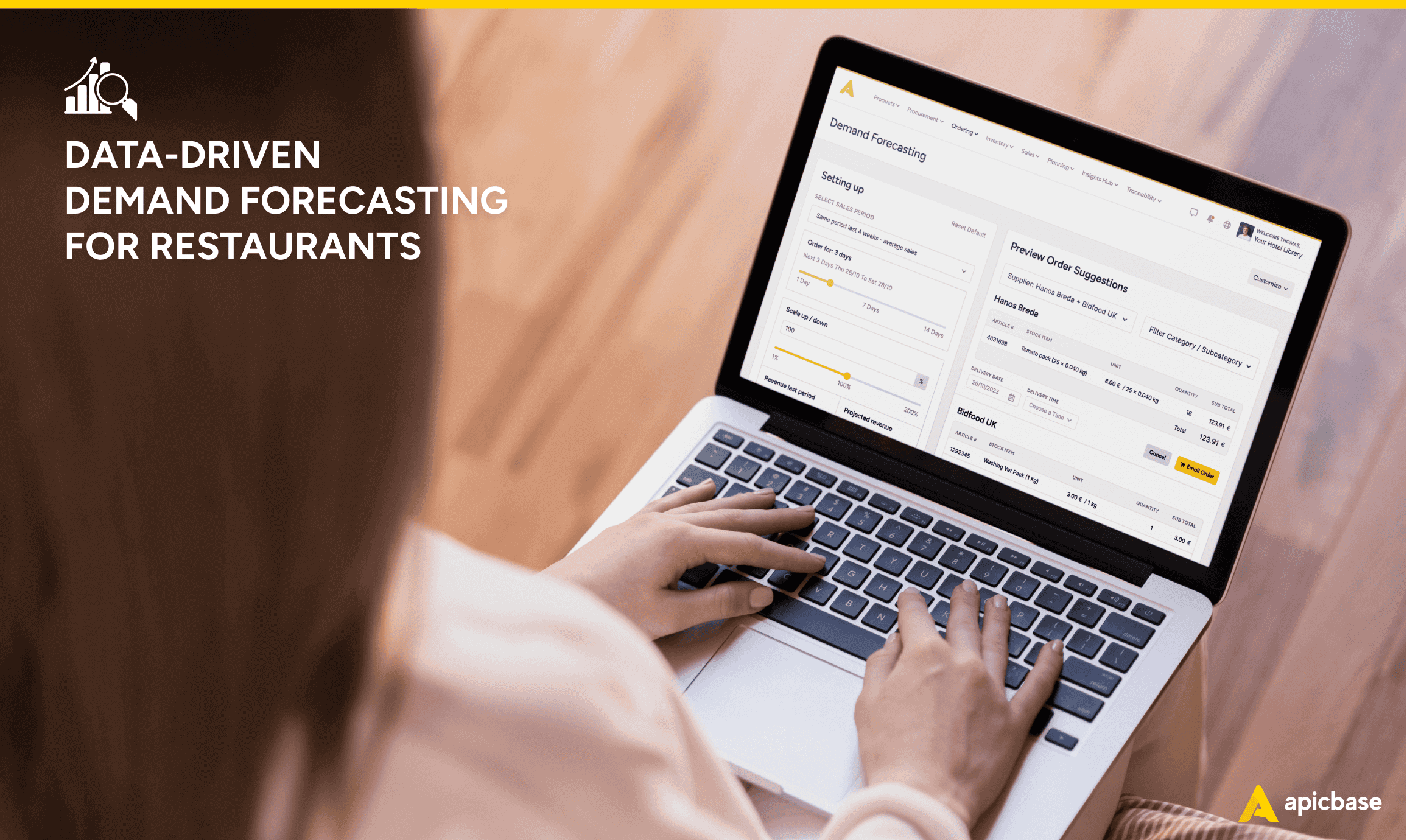Managing inventory and supplier ordering is like juggling flaming torches while riding a unicycle (which also happens to be on fire). Demand forecasting for restaurants puts out the flames, takes the guesswork out of purchase orders and streamlines the supply chain.
Picture this: You have to order the correct ingredients, in precise quantities, at the right time, from various suppliers without knowing future sales. That’s a daunting task.
When restaurant managers or kitchen staff make poor purchasing choices, they face increased food waste, inflated costs and frustrated customers. In other words, both the restaurant’s reputation and profits depend on proper inventory management.
Effective procurement in the restaurant industry takes skill, experience, and calm decision-making. That’s why it often goes wrong.
Fortunately, technology has dramatically improved efficiency in inventory management. Most leading restaurants transitioned from spreadsheets to advanced demand forecasting software, adopting a data-driven approach over guesstimates and intuition for procurement.
If you are unfamiliar with demand forecasting, this article is for you.
We’ll answer the following questions:
- What is demand forecasting?
- Why is demand forecasting important for restaurants?
- What are the benefits of demand forecasting in food service?
- How demand forecasting works in hospitality
- Technology for purchasing perfection when running multiple restaurants
Let’s start with a definition.
What is Demand Forecasting for Restaurants?

Demand forecasting for restaurants is a technology-driven method that optimises ordering, combining sales, inventory and recipe data. By analysing past sales data, it forecasts future demand for menu items. The restaurant procurement software then cross-references the projected demand with current inventory, outstanding stock deliveries, and the recipe database. Next, it generates precise purchase orders tailored to individual suppliers. This ensures that restaurants maintain the ideal stock levels to meet anticipated sales for a given location and period.
Synonyms of demand forecasting are sales forecasting, demand prediction and sales projection.
For demand forecasting to work effectively, it’s crucial to have a seamless procurement platform that integrates inventory, recipe databases, and supplier e-commerce, using robust API connections.
Why are Demand Predictions Important?
Mastering the restaurant supply chain requires time and effective inventory management software. In an industry with crippling staff shortages, time is like Big Foot, often heard of but rarely seen.
When mistakes happen in the procurement department the costs are always high. The reasons for the high cost of purchasing mistakes is twofold. When demand and inventory are mismachted there is a risk of:
- Overstocking: That means company capital is locked in perishable goods. When these F&B products aren’t sold, they go to waste and have to be thrown out, thus resulting in a direct financial loss.
- Understock: If demand exceeds what the restaurant can supply, customers cannot order what they want. This significantly reduces the quality of the experience, which can lead to a customer not returning for another visit, i.e. the customer is lost to a competitor.
Demand forecasting software addresses both challenges. It predicts how much stock to keep on hand to meet the expected demand. That way, food waste is kept to a minimum and stock remains slim.
Additionally, because Apicbase automates the whole process from inventory management to generating purchase orders, working with demand forecasting software, speeds up the ordering workflows and prevents mistakes in ordered quantities from suppliers.
Those are clear advantages. And they set the stage for a range of other benefits.
Benefits of Sales Projection in Food Service
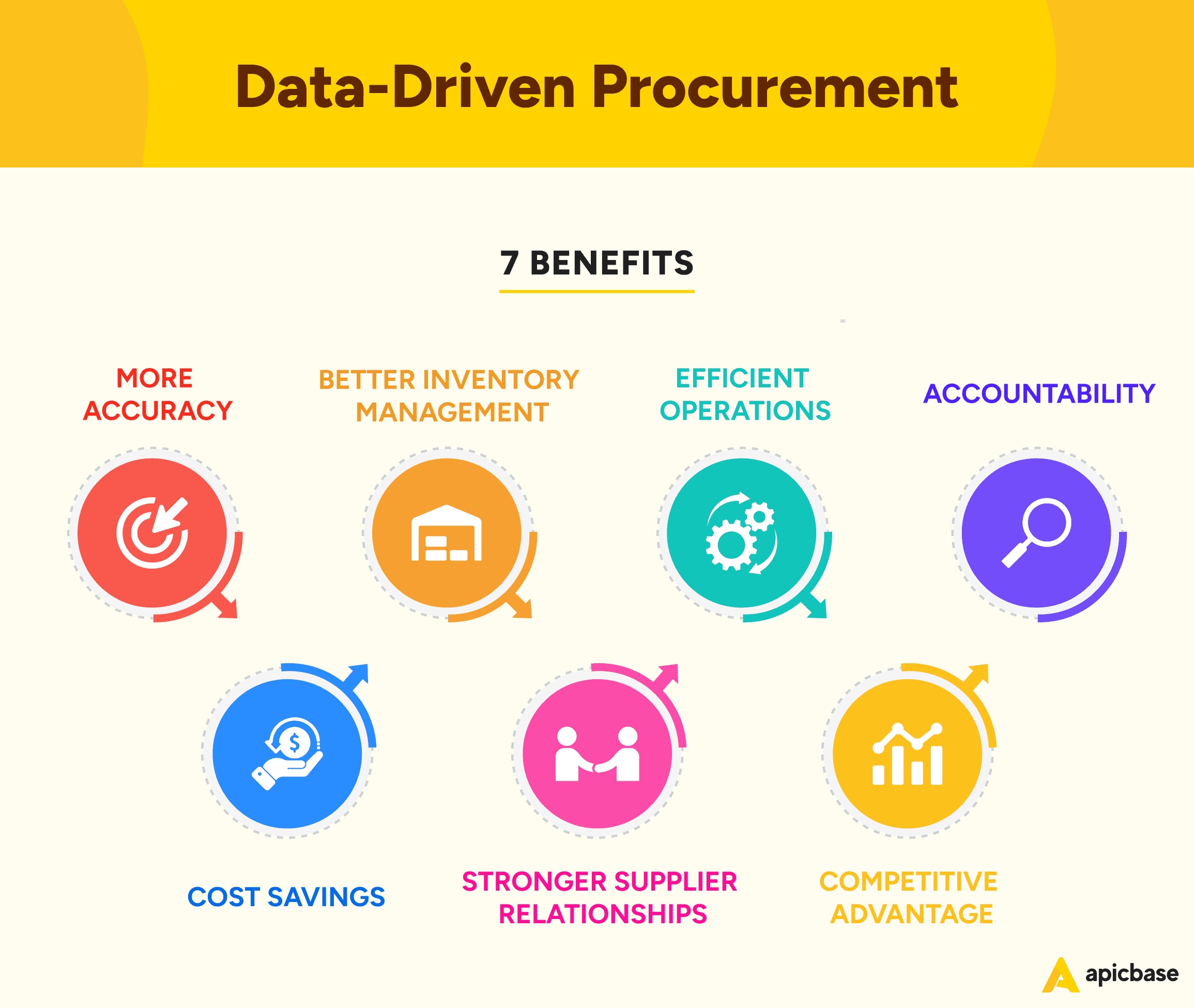
There are seven distinct benefits of data-driven restaurant forecasting.
- More Accuracy: Using solid data minimises the chances of human error. Your kitchen staff’s purchasing decisions are based on facts rather than gut feelings or rough estimates. As a result inventory matches the demand perfectly which reduces food waste significantly – Also, the accuracy and reliability reduces stress.
- Significant Cost Savings: Analysing past data lets you spot patterns and trends, giving you a stronger position when negotiating with suppliers. This can lead to better deals and discounts. Plus, again, it helps prevent overstocking or understocking.
- Perfect Inventory Management: Using accurate data allows you to maintain optimal inventory levels. This minimises food waste and ensures capital isn’t tied up in perishable goods.
- Stronger Supplier Relationships: By keeping your orders consistent and cutting down on those last-minute changes, you’ll build a stronger bond with your suppliers. This often leads to better terms for you and a smoother supply chain.
- Efficient Operations: You’ll spot any inefficiencies in your purchasing process using a data-driven approach. This means you can fine-tune your methods, improving operations and overall efficiency.
- Competitive Advantage: Restaurant profit margins are slim. Using past data from multiple locations and suppliers can help identify ways to improve the business. This information can be used to negotiate better deals with suppliers or spotting profit leaks long before they impact your bottom-line.
- Accountability: With data at your fingertips, you’ll have a crystal-clear record of the purchasing decisions made at every store, unit performance, and inventory trends. It gives greater transparency and accountability for your entire organisation.
In short, sales-based demand forecasting is accurate and gets you actionable data. What’s not to like?
Let’s explore how leveraging technology in demand forecasting can boost your restaurant’s operational efficiency and profitability.
How Demand Forecasting Works in Hospitality
To enhance inventory management in multi-site restaurants, having reliable data for making purchasing decisions is essential.
The data comes from tools you are probably already using, and you don’t need to grasp every technical nuance from sales-based purchasing to enjoy the benefits. Understanding the basics of smart ordering, inventory optimisation, and restaurant procurement software is enough to optimise your restaurant operations.
I’ll show you how Apicbase‘s demand forecasting for restaurants addresses the challenge.
There are other solutions out there, but this is our unique approach.
All the steps below happen in a flash. It might seem like magic, but it’s truly the product of expert engineering.
We start with analytics.
1. Sales-based analysis
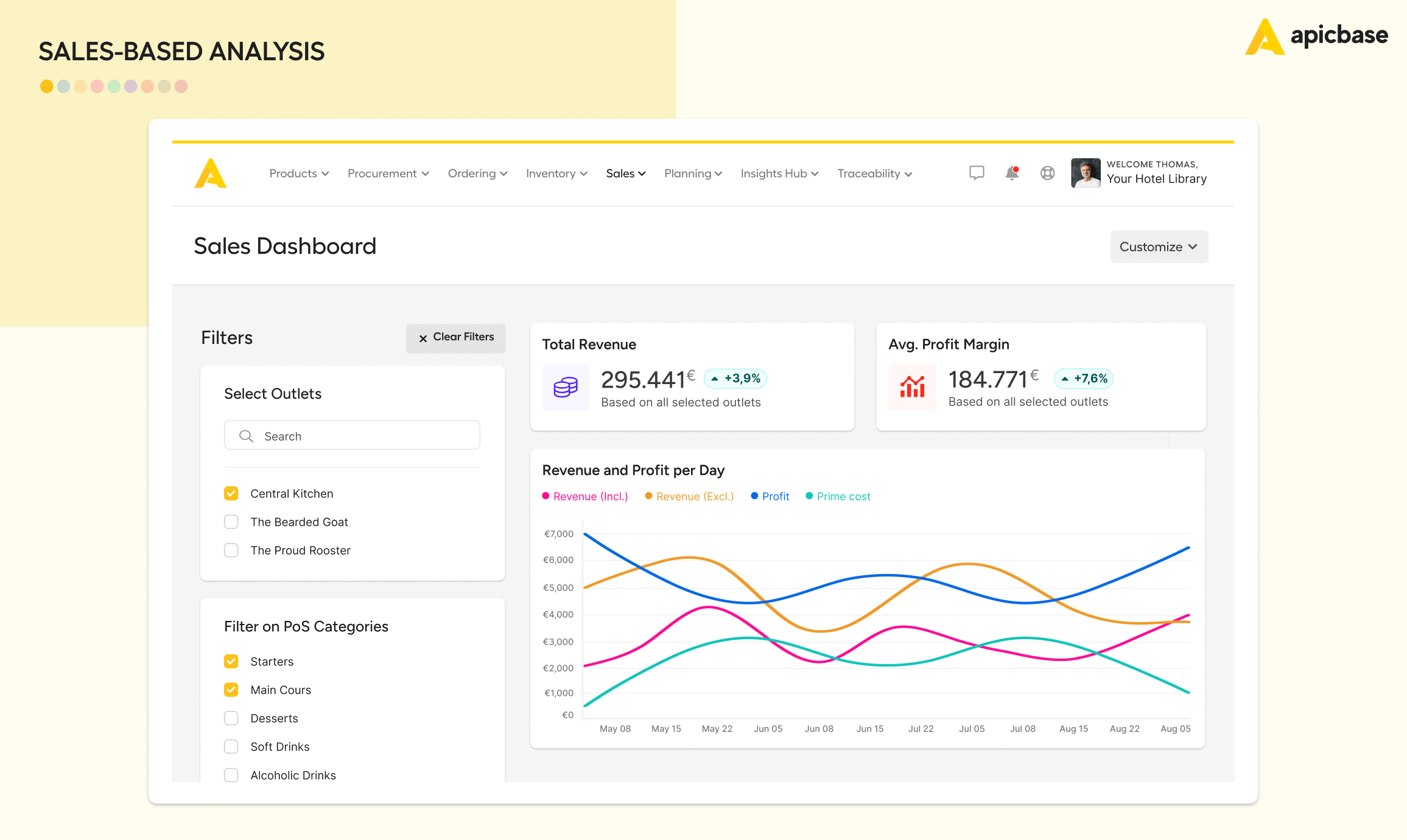
- Action: Analyse past sales.
- Purpose: Predict future popular dishes.
Apicbase begins by analysing the historical sales data of a specific store. To determine how popular a menu item will be, it calculates the average sales for each day of the week over your chosen period. So, if you want to look back over the past month, Apicbase will compare all the Mondays, all the Tuesdays, and so on. This way, you get a more balanced demand forecast by recognising the unique sales patterns of each day.
Note: Menus change. If an item is no longer on sale, you can exclude it from the analysis. Also, closing days are automatically excluded from the average sales calculation.
2. Recipe reference
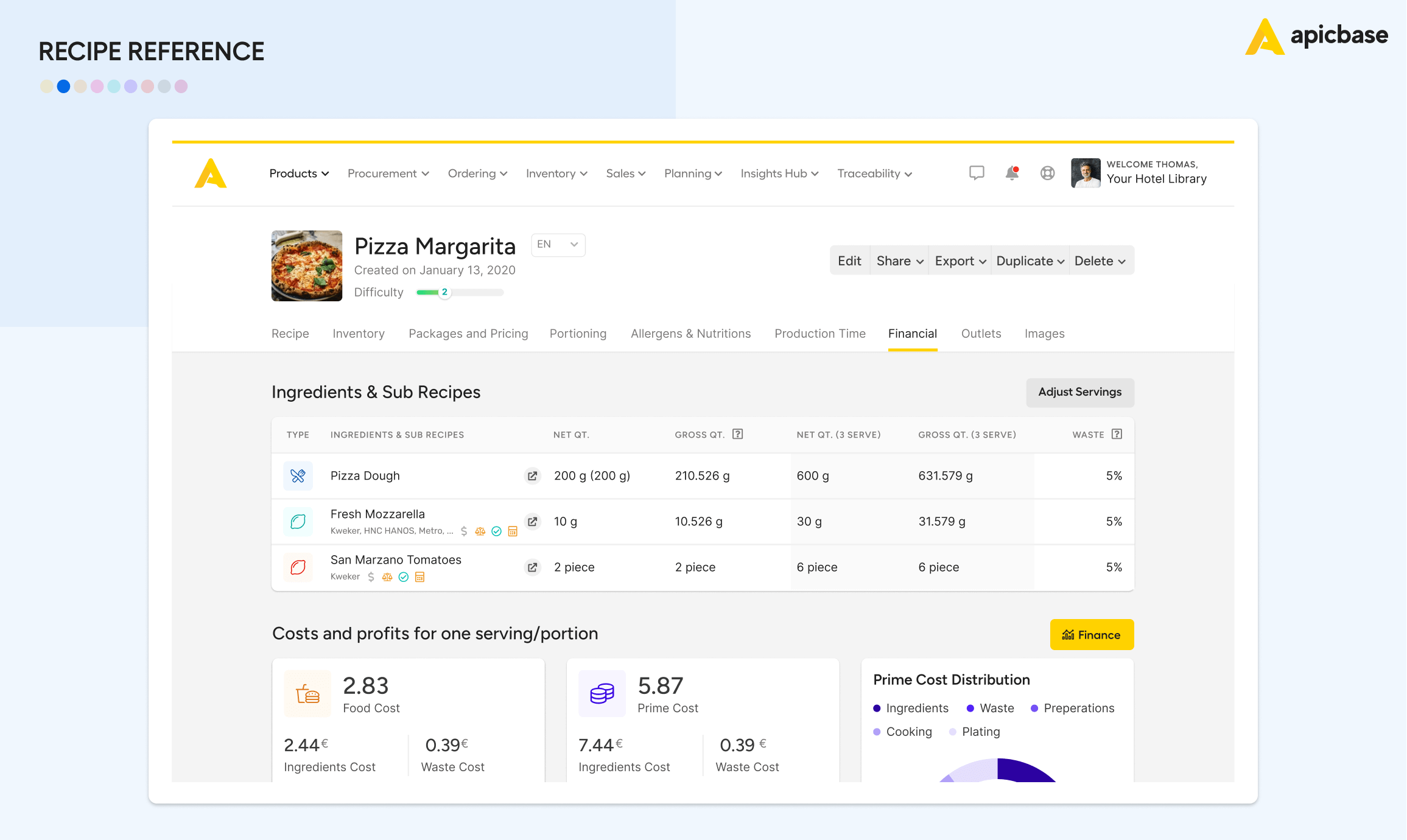
- Action: Access the system’s recipe database.
- Purpose: Determine ingredients and quantities for each sold dish.
Next step: Apicbase checks your recipe database for every menu item sold. That way, it can calculate the exact quantity of raw materials required to reproduce the item based on its sales volume.
3. Cross-check with what’s in stock
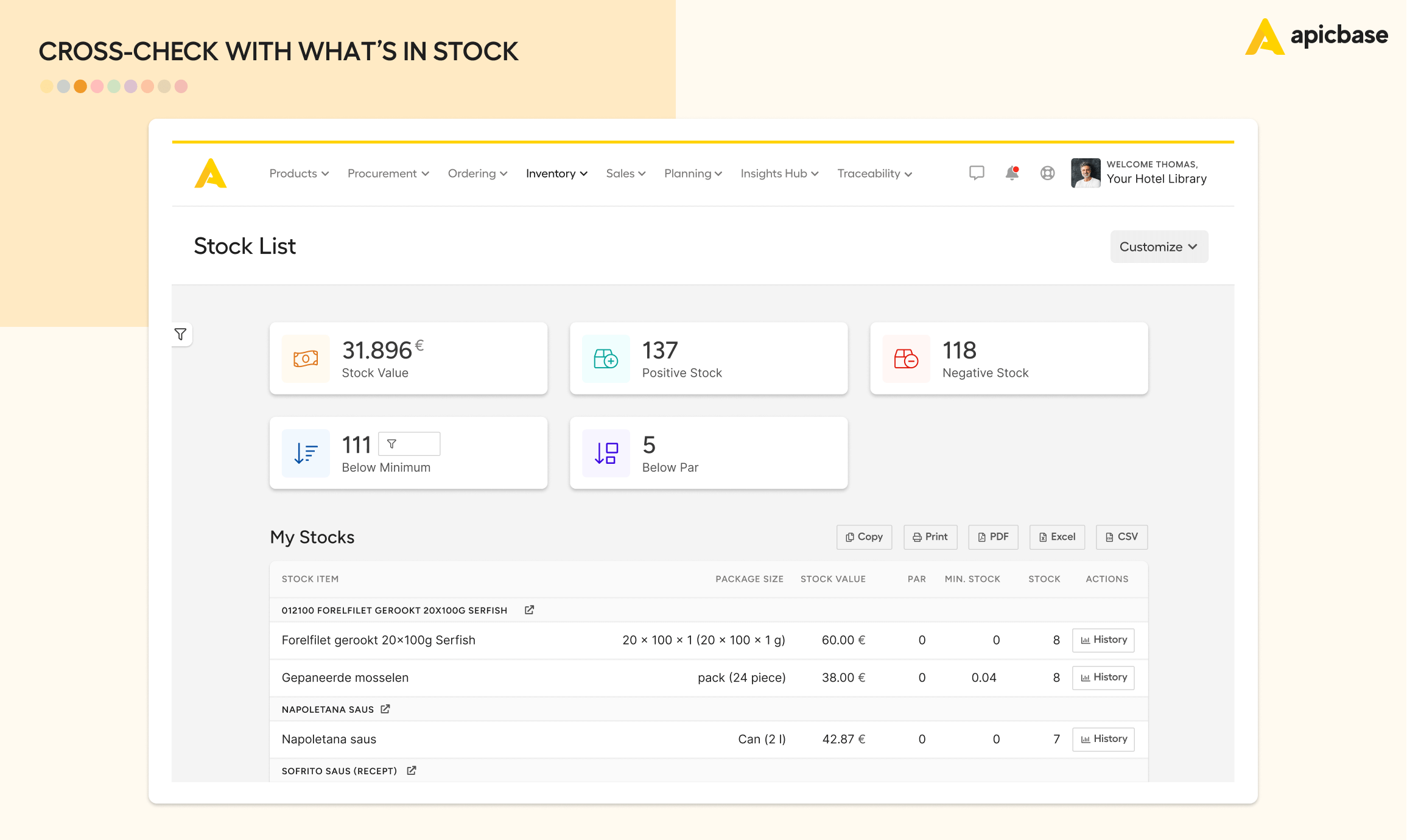
- Action: Compare the ingredient list with the current inventory.
- Purpose: Identify available and missing ingredients.
Apicbase then cross-references the total raw materials needed against what’s already in stock at that location. This ensures that any existing stock is taken into account before making new purchase orders.
Note: In a bustling kitchen, multiple employees often place orders with suppliers. To prevent duplicate orders or excessive stock, Apicbase keeps track of outstanding ordered quantities. These items have been ordered but have yet to be delivered or received. Apicbase will notify staff about the pending deliveries to help them manage stock levels effectively.
4. Aggregate ingredients needed
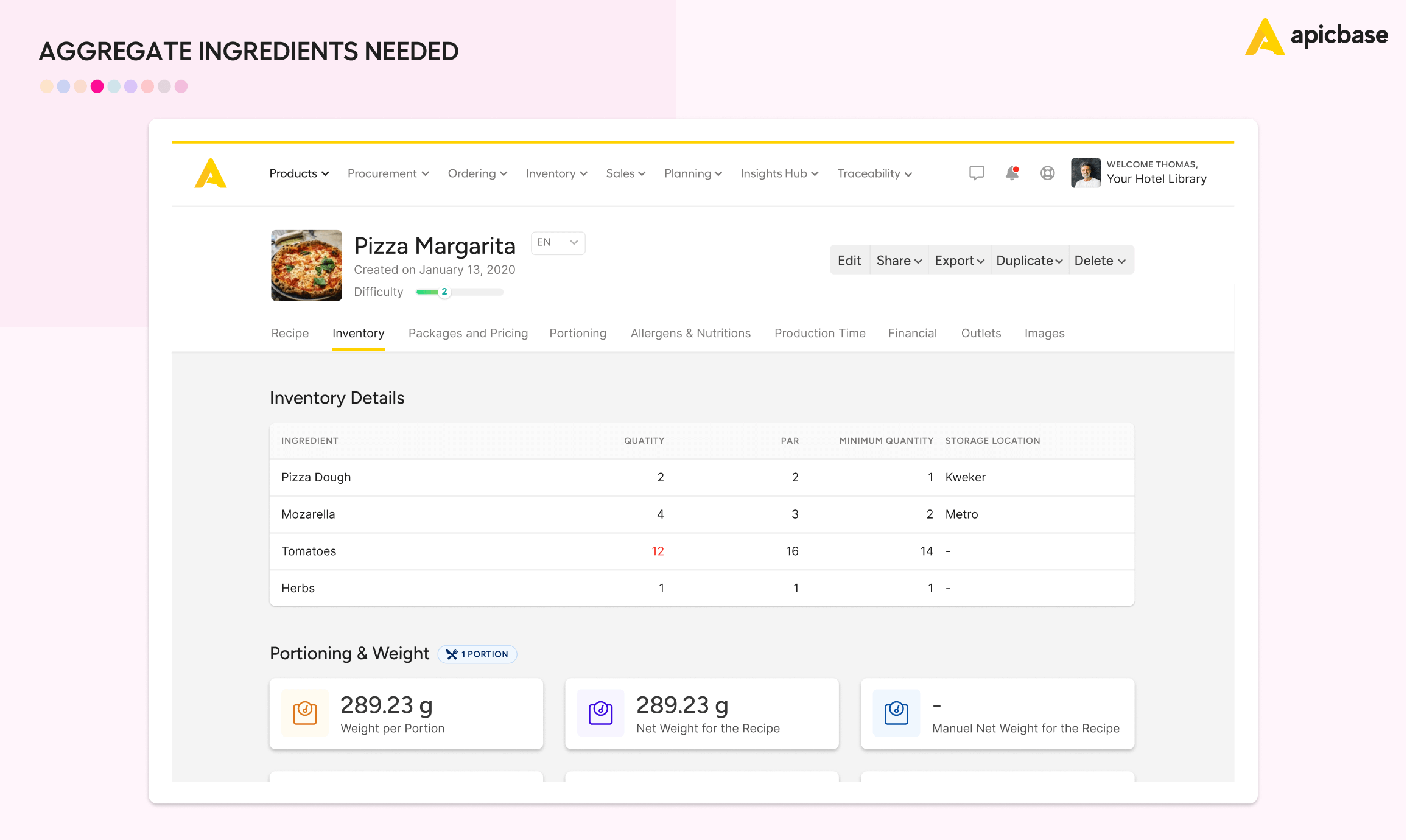
- Action: Aggregate required ingredients for all dishes.
- Purpose: Create a comprehensive ingredient list.
Next, Apicbase’s demand forecasting for restaurants tallies up all the ingredients needed for the whole menu. You get a comprehensive list of ingredients and quantities required to meet the forecasted demand.
5. Generate purchase orders

- Action: Generate supplier-specific orders.
- Purpose: Order missing ingredients, considering existing stock.
Now that Apicbase knows precisely what you need to meet the predicted demand, it creates purchase orders for each supplier.
Note: You can adjust the order duration based on the category. For instance, you might buy fresh goods for the upcoming three days, dry goods for an 8-day period, and beverages for two weeks. Apicbase will factor in these category-based frequencies when creating purchase orders.
6. Final review
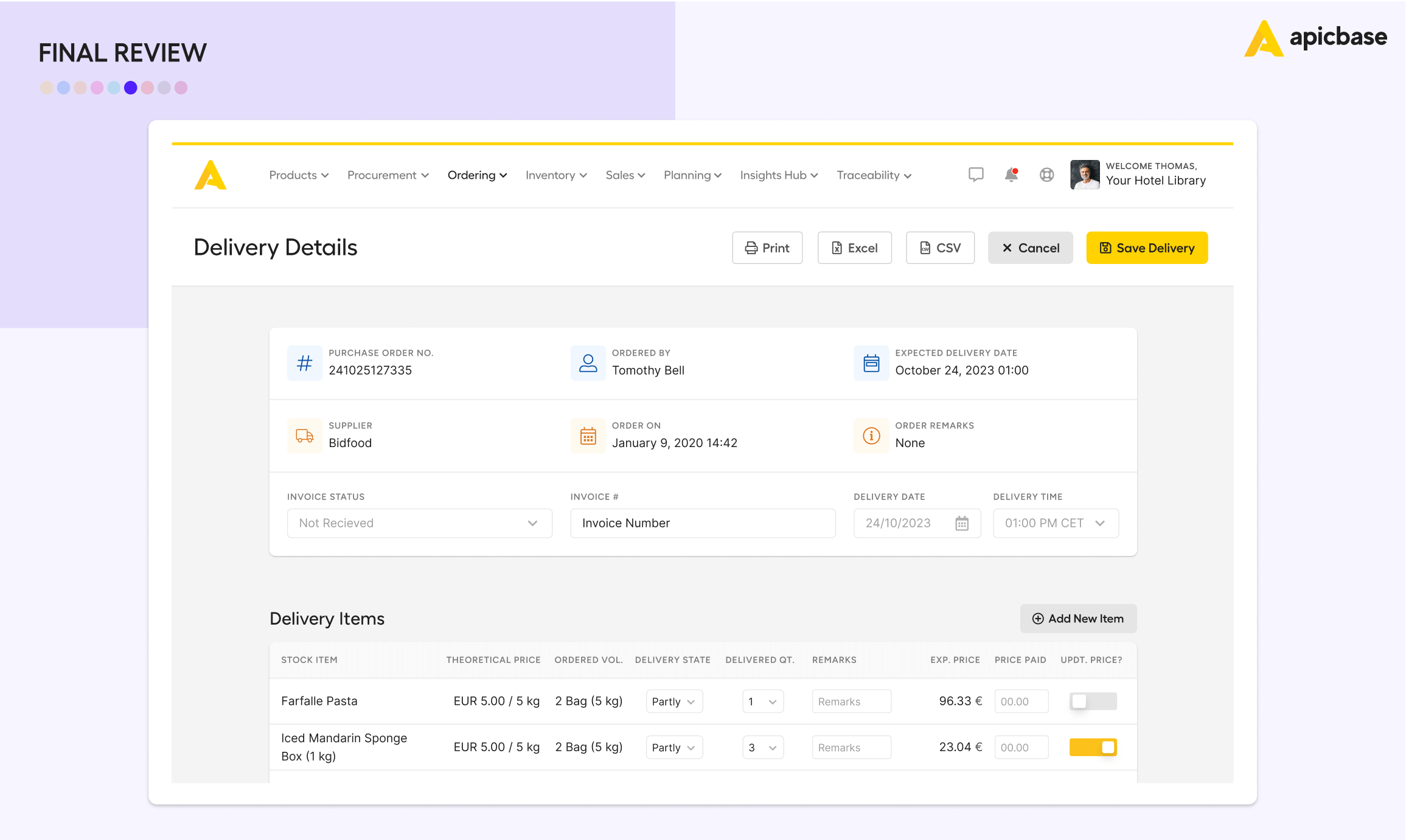
- Action: Review and adjust drafted purchase orders.
- Purpose: Ensure accuracy and account for external factors.
You’re always in control. Before finalising any order, you can review it. If circumstances have changed, like an upcoming event or other factors that historical sales data might not reflect, you can still make the necessary adjustments.
7. Click and send
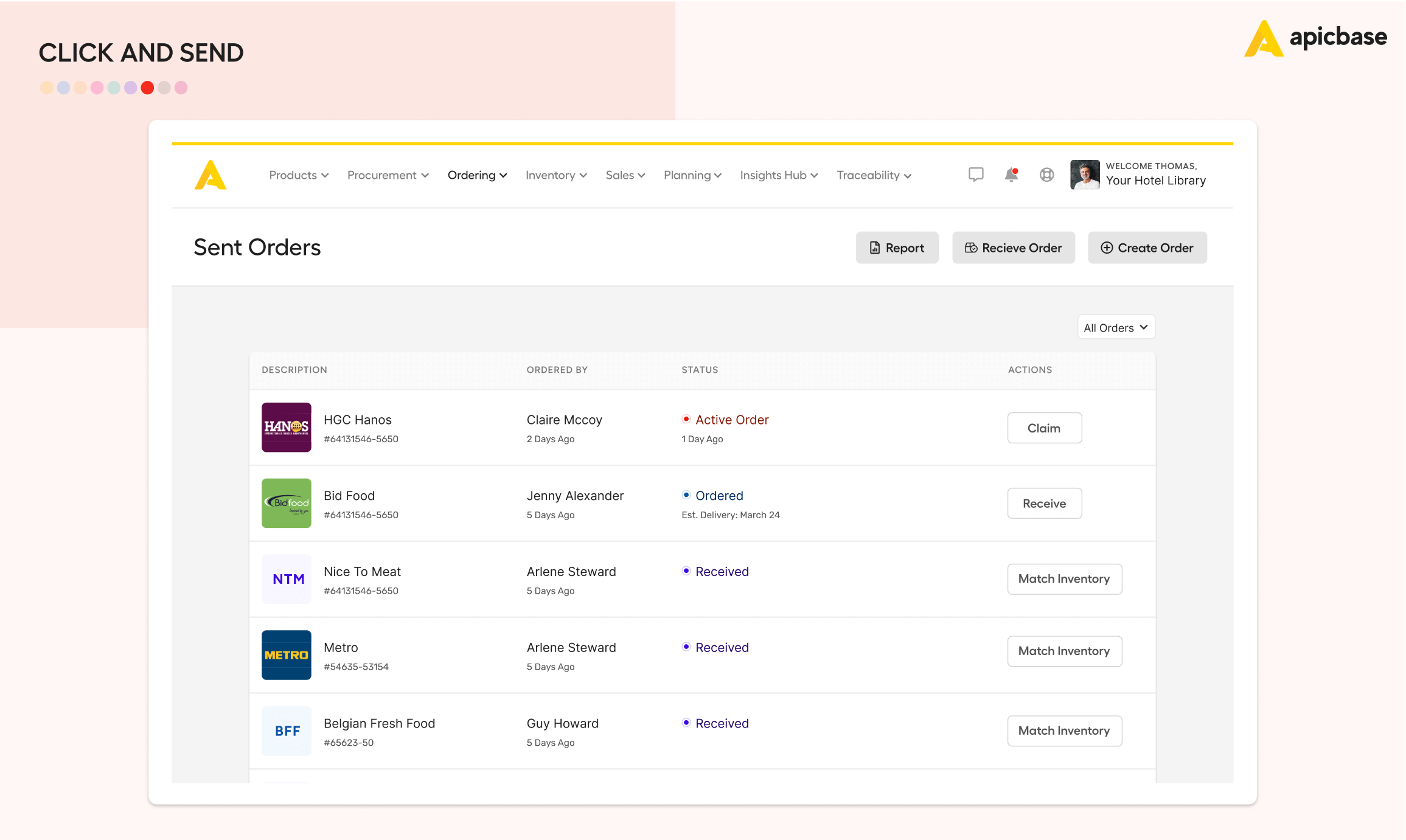
- Action: Send approved orders to suppliers.
- Purpose: Procure required ingredients.
When you give the purchase orders the thumbs up, Apicbase automatically forwards the orders to your suppliers. This automated process is time-efficient and precise, reducing the chances of errors and misunderstandings.
Furthermore, the integration with suppliers streamlines the ordering process and enhances communication. This efficiency ensures that orders are always received, and deliveries are accurate and timely.
8. Safety stock
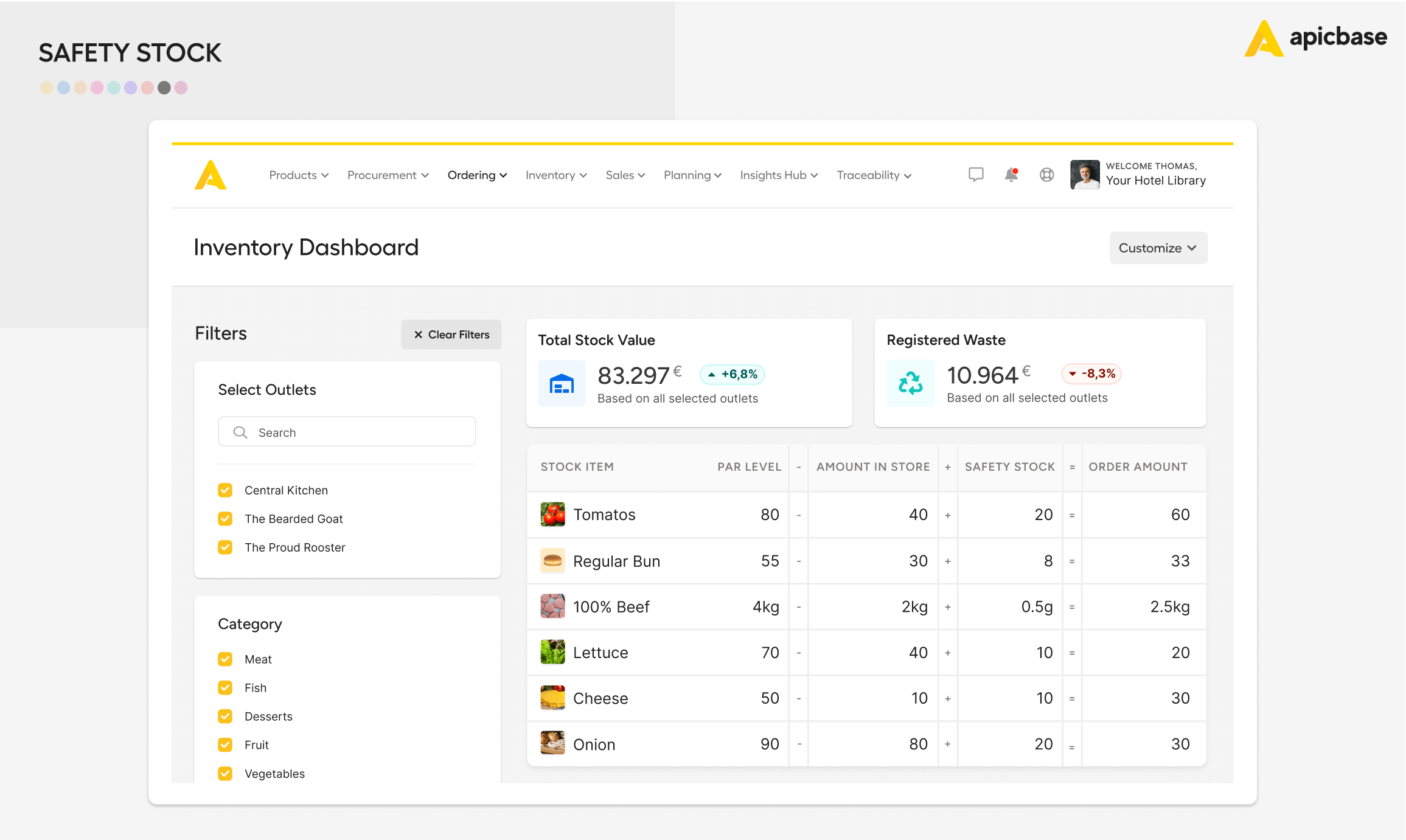
- Action: Maintain a buffer stock for each ingredient.
- Purpose: Handle unexpected demand or supply delays.
Apicbase keeps a safety stock or buffer for each inventory item. You set the percentage for the buffer, and Apicbase automatically scales the forecasted demand and purchase orders. This way, even if there’s a sudden spike in demand or a delay in supply, your restaurant can keep running smoothly without disruptions.
Note: Apicbase displays the historical revenue from the reference period and the projected revenue for the order period. If you anticipate higher turnover than projected or need additional safety stock, simply adjust the slider. This will proportionally increase both the projected revenue and safety stock, and Apicbase will automatically modify the order quantities for each item accordingly.
9. Efficient Order Receiving
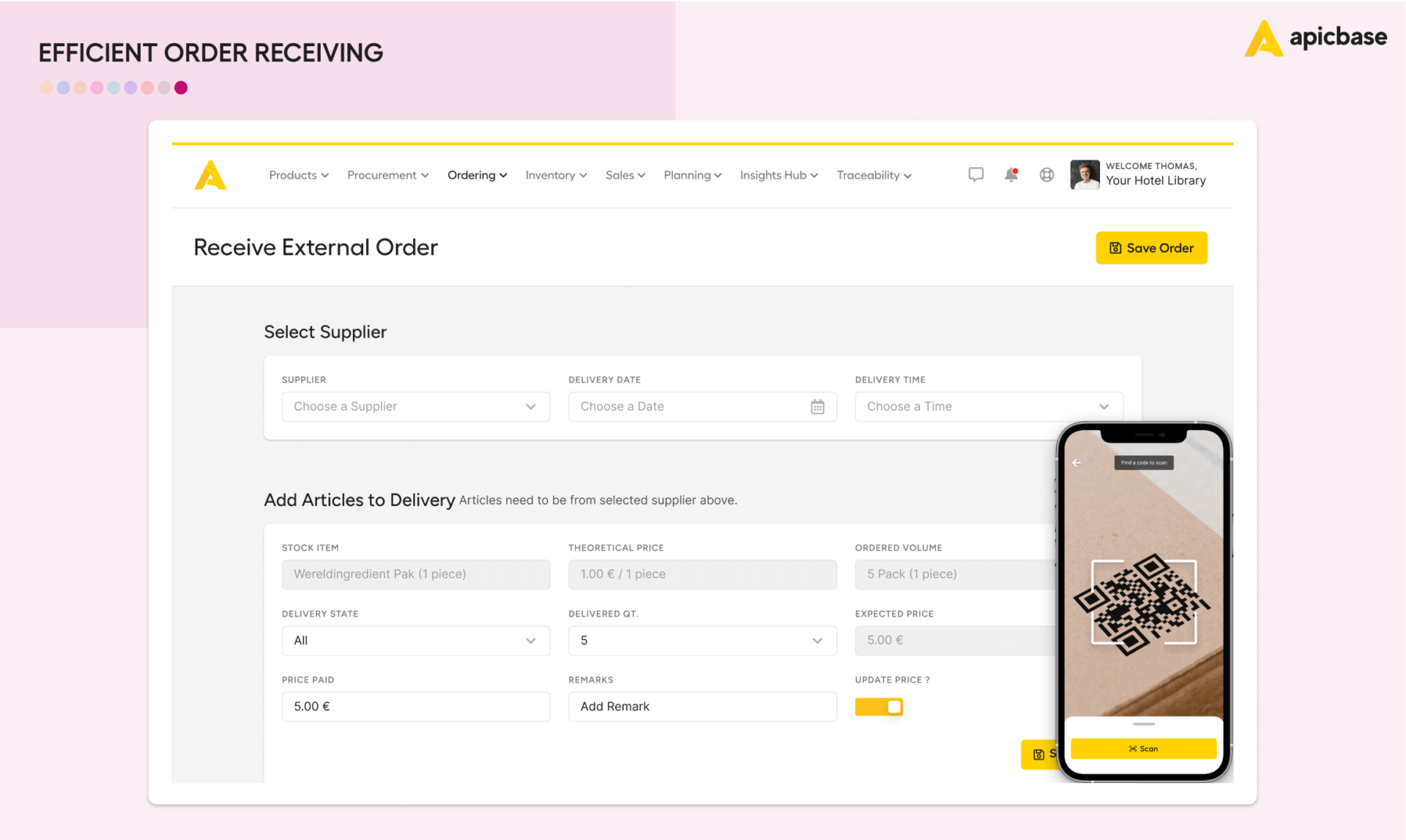
- Action: Scan/input items via Apicbase upon arrival.
- Purpose: Verify orders and update Apicbase inventory.
When your orders arrive, kitchen staff can swiftly use the Apicbase app on their phone or tablet to scan product barcodes or manually input items. The system then cross-references these with the outstanding purchase orders. Any received items are promptly marked as such, and Apicbase automatically updates your inventory to reflect the new stock levels.
Demand forecasting: Purchasing Perfection when Running Multiple Restaurants
Running multiple restaurant locations is challenging. Every order with suppliers has to be spot on, even when you’re not on-site.
A wrong order isn’t just about wasted ingredients or money; it’s about that gut-wrenching feeling that control might slip through your fingers. It’s also stressful for staff to constantly second-guess whether they made the right decision.
If you want to regain control and empower staff to make purchasing decisions with confidence, it is time to take action.
Tap the button to learn more about Apicbase’s demand forecasting software.
